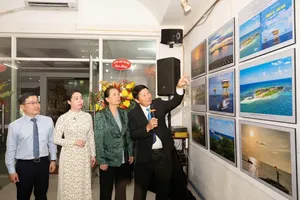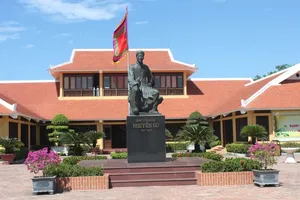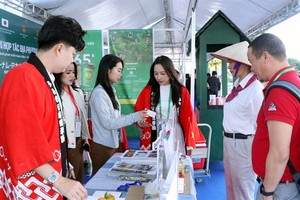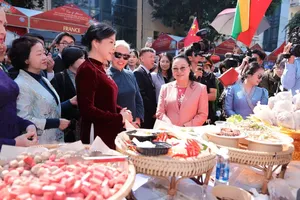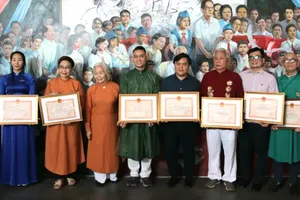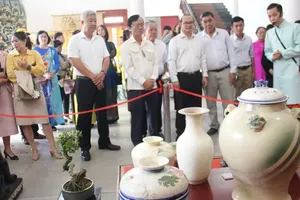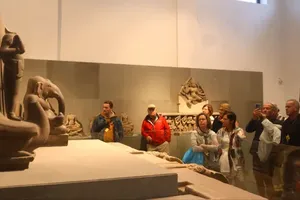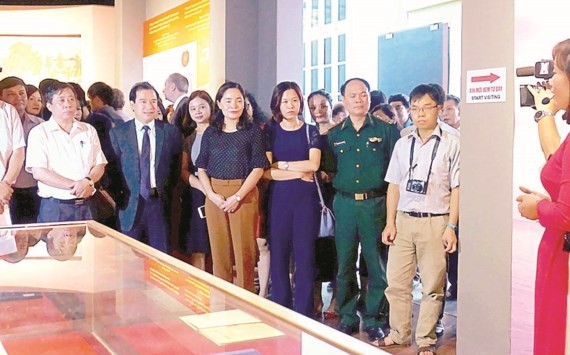
The exhibition is being held at the Vietnam National Museum of History to mark the 90th anniversary of the first publication of the book (1927 – 2017).
The museum’s deputy director Nguyen Van Doan said “Duong Kach Menh” (Revolutionary Path) includes lectures by Nguyen Ai Quoc, an alias of Ho Chi Minh, at training courses for staff of the Vietnamese Revolutionary Youth League, held in Guangzhou, China, between 1925 and 1927. The first printed versions were moved secretly to French-controlled Vietnam before 1930.
The book is said to be among the great works in terms of revolutionary theory and practice. Through the book, Nguyen Ai Quoc, the first Vietnamese communist, presented the essence of Marxist-Leninist revolutionary doctrine and the Vietnamese revolution’s basic development direction in the most intelligible way.
This book played an important role in propagating Marxism-Leninism in Vietnam in the late 1920s. Following the guiding line of Revolutionary Path, the first students came back to Vietnam to prepare for the foundation of the Vietnam Communist Party in 1930. They also led the successful August General Uprising in 1945 to found the Democratic Republic of Vietnam and open a new era in the nation’s history.
The book currently stored at the museum is one of the few original prints of 1927 and was recognised as a National Treasure in 2012.
Alongside the “Duong Kach Menh”, more than 150 documents, artefacts, and photos are also on display to introduce to the public the book’s great significance as well as the revolutionary generation’s contribution - the first “red seeds” that Nguyen Ai Quoc germinated for the Vietnamese Revolution.
The museum’s deputy director Nguyen Van Doan said “Duong Kach Menh” (Revolutionary Path) includes lectures by Nguyen Ai Quoc, an alias of Ho Chi Minh, at training courses for staff of the Vietnamese Revolutionary Youth League, held in Guangzhou, China, between 1925 and 1927. The first printed versions were moved secretly to French-controlled Vietnam before 1930.
The book is said to be among the great works in terms of revolutionary theory and practice. Through the book, Nguyen Ai Quoc, the first Vietnamese communist, presented the essence of Marxist-Leninist revolutionary doctrine and the Vietnamese revolution’s basic development direction in the most intelligible way.
This book played an important role in propagating Marxism-Leninism in Vietnam in the late 1920s. Following the guiding line of Revolutionary Path, the first students came back to Vietnam to prepare for the foundation of the Vietnam Communist Party in 1930. They also led the successful August General Uprising in 1945 to found the Democratic Republic of Vietnam and open a new era in the nation’s history.
The book currently stored at the museum is one of the few original prints of 1927 and was recognised as a National Treasure in 2012.
Alongside the “Duong Kach Menh”, more than 150 documents, artefacts, and photos are also on display to introduce to the public the book’s great significance as well as the revolutionary generation’s contribution - the first “red seeds” that Nguyen Ai Quoc germinated for the Vietnamese Revolution.
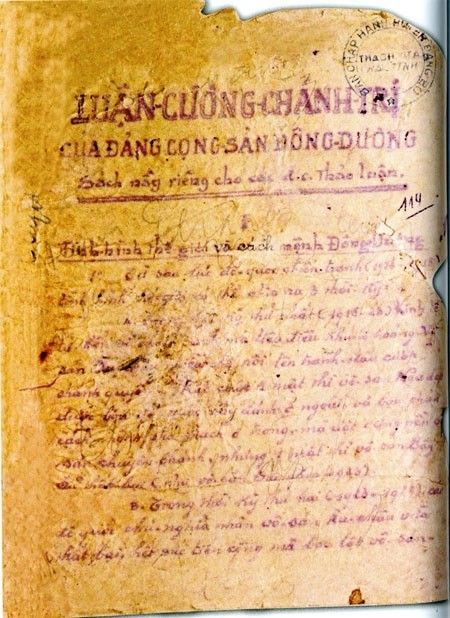
A page from Duong Kach Menh (Revolutionary Path) written by President Ho Chi Minh. (Photo courtesy of the museum)
)


